Don’t Be That Captain: Know The Rules, Use Common Sense, Stay Collision Free
August 7th, 2025 by team

by B.J. Porter (Contributing Editor)
Every summer we hear stories about tragic mishaps on the water, sometimes with loss of life, serious injuries, or lost boats and property damage. And all of us who have spent much time on the water have had at least one of those scary “what was that guy thinking?” moments where we see someone doing something so flagrantly unsafe that it puts all of us in danger.
When multiple boats are involved, it can be worse, because those incidents are often preventable. It’s often human error and judgment that fail us on one or more of the boats.
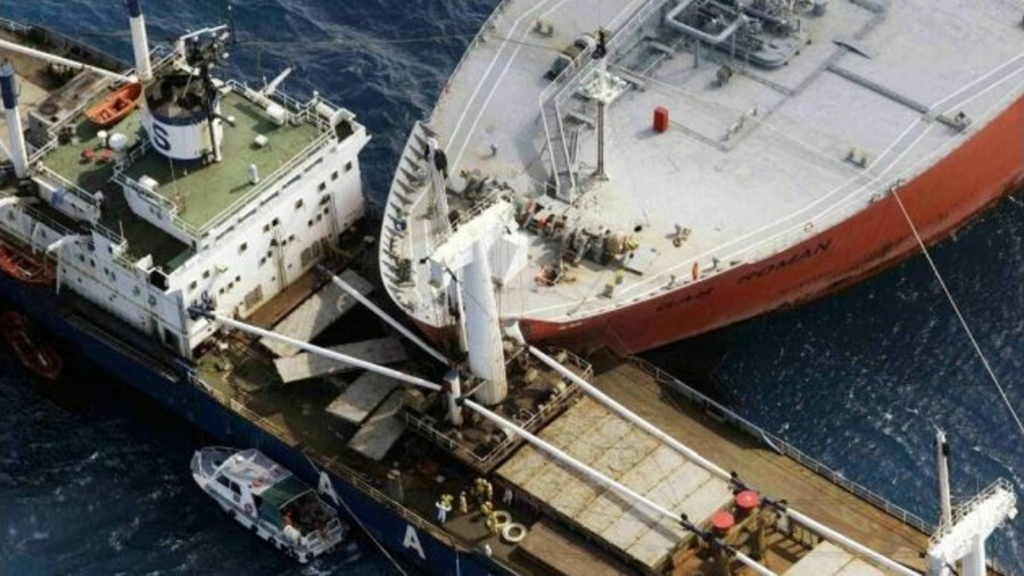
Seafarers have spent centuries working out the best way to share the waters, and we’ve codified a lot of that into a set of laws, rules, and courtesies that make everything safer and pleasant for everyone. And that’s where COLREGS come in.
What are COLREGS?
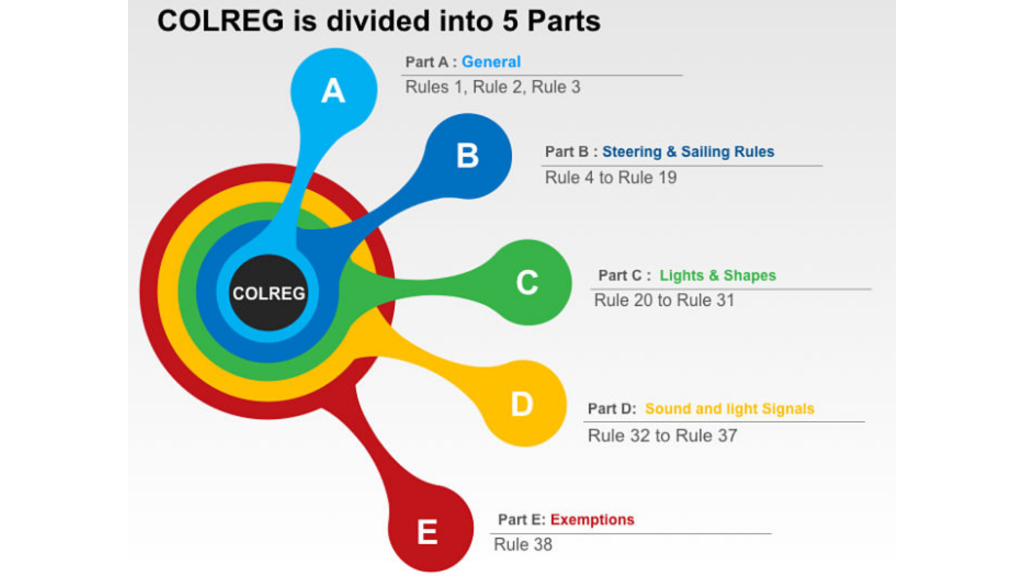
COLREGS refers to the International Regulations for Prevention of Collisions at Sea, which are basically the “rules of the road” for boat traffic on the high seas, in areas denoted outside the “COLREGS Demarcation Line.” Paired with COLREGS are the localized Inland Navigation Rules, which apply to waters inside the Demarcation line, or “Inland Waters”. In the U.S. this includes many harbors and bays, most rivers, the Great Lakes, and a few other specific bodies of water listed in the regulations.
An international agreement created COLREGS, and they apply to all shipping and boating on the ocean. But local governments handle water inside the demarcation lines for each country. While there are a few differences between Inland and COLREGS rules, it’s also important to realize that you may move from one set of rules to another without realizing it.
Demarcation Line
The Code of Federal Regulations, Section 33, Part 80, defines the COLREGS Demarcation line for the U.S. It’s full of very clear language like this:
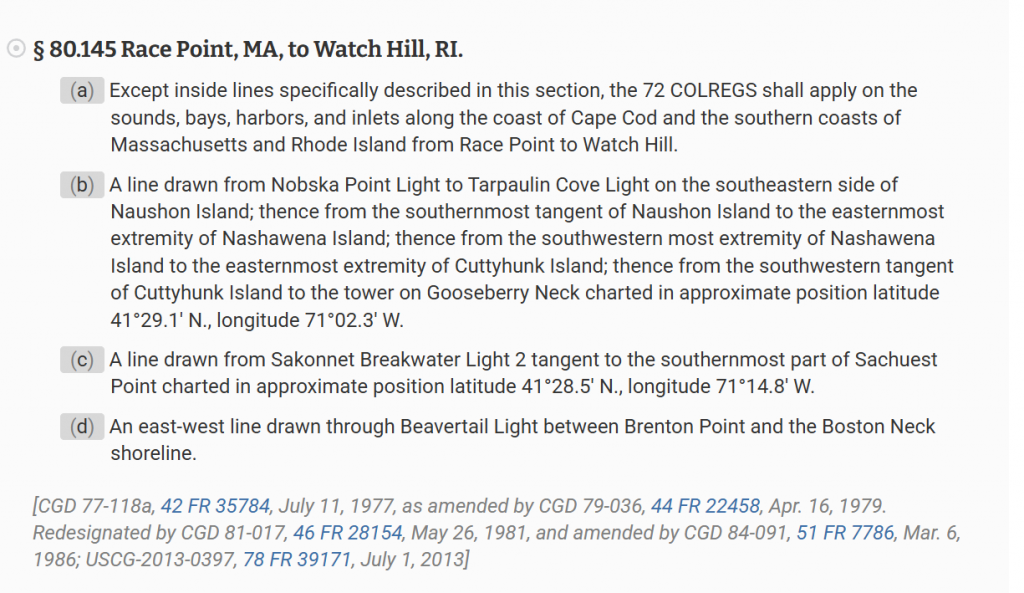
OK, maybe that’s not so clear if you don’t know the waters. But this is just one section describing one busy area of water. This is how a nautical chart translates it:
For 80.145 (c) – the mouth of the Sakonnet River

You can see the line crossing the river exit exactly as described – from the Sakonnet breakwater light to Sachuest Point.
And 80.145 (d), the mouth of Narragansett Bay, a much busier traffic area with a lot more markings, it looks like this:

This area, which is just west of the Sakonnet River, is much busier with commercial traffic, and has the demarcation line shown again as described in the text – a straight line from Brenton Point through Beavertail Light to the opposite shore.
If you are outside (seaward, which is to the south in this chart) of the Demarcation Line, then the international COLREGS apply. But if you are inside the line, you refer to the Inland Rules.
It’s important to note that if you were sailing around Beavertail Light, you’d move from Inland Navigation Rules to COLREGS and back to Inland rules. Therefore, a ship you encounter south of Beavertail Light may make different sound signals to show the same thing north of the light, or expect different responses if they think you need to exchange information.
The significant question is – what does this mean to you, the boater?
Inland Navigation Rules
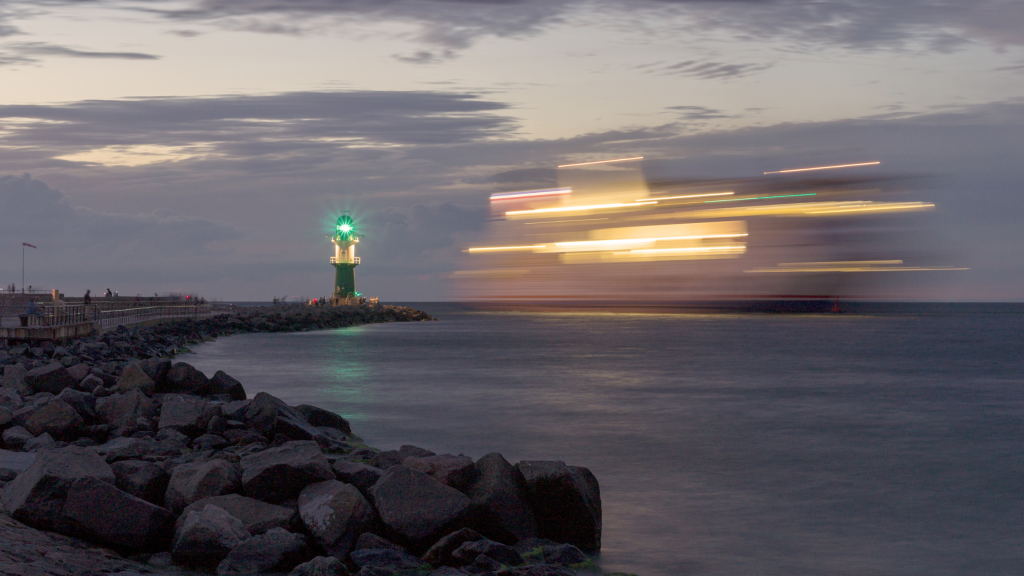
The USCG Navigation Rules and Regulations Handbook provides a free, detailed overview of every aspect of the navigation rules. Follow the link to download your own copy if you don’t have one already.
The Inland Rules are very similar to the International Rules and identical in most aspects. But they cover many instances specific to inshore waters. This includes right-of-way rules governing rivers and lakes, special lighting circumstances only found inland, and other details which differ from shipping operations on the ocean.
The Handbook provides both International and Inland rules, and there’s an amalgamated summary which can help in learning the differences.
Differences between COLREGS and Inland Rules
It’s important to understand the basics of both sets of rules. Fortunately, most of the basics are the same on the critical points about who has the right of way when boats meet, how most boats are lit at night, and other rules that responsible boaters know.
The Handbook presents each section of the regulations together so you can easily reference International versus Inland. However, the differences are not immediately obvious. But they are presented together, with the differences highlighted, at an Amalgamated Rules page at the USCG.
Some key differences include:
- Inland Rules specify right of way for down-current bound vessels over up-current vessels, and should propose the way they pass each other in narrow passages.
- Inland Rules do not recognize the concept of a “Vessel Constrained by Draft” in determining the rights of way.
- Inland rules allow lights to be lowered to get under bridges.
- Towing lights are somewhat different on inland vessels, with a yellow flashing “Special Flashing Light” you won’t see in international waters.
- There are special rules for lights shown in Special Anchorages designated by the USCG.
- Inland has specific rules for barges and barge lights.
- There are significant differences between Rule 34 – Maneuvering and Warning Signals
- International signals convey a course change, but Inland signals signal which side the signaling boat intends to leave the other boat on. This is a subtle difference, but has a big impact on how you maneuver around the other vessel.
- Inland boats are supposed to repeat signals back if they understand and agree; it’s not expected internationally.
- Sound signals for stating intentions while overtaking are quite different between the two waters.
- Inland Rules recognize a flashing strobe as a distress signal showing Need of Assistance. International rules do not.
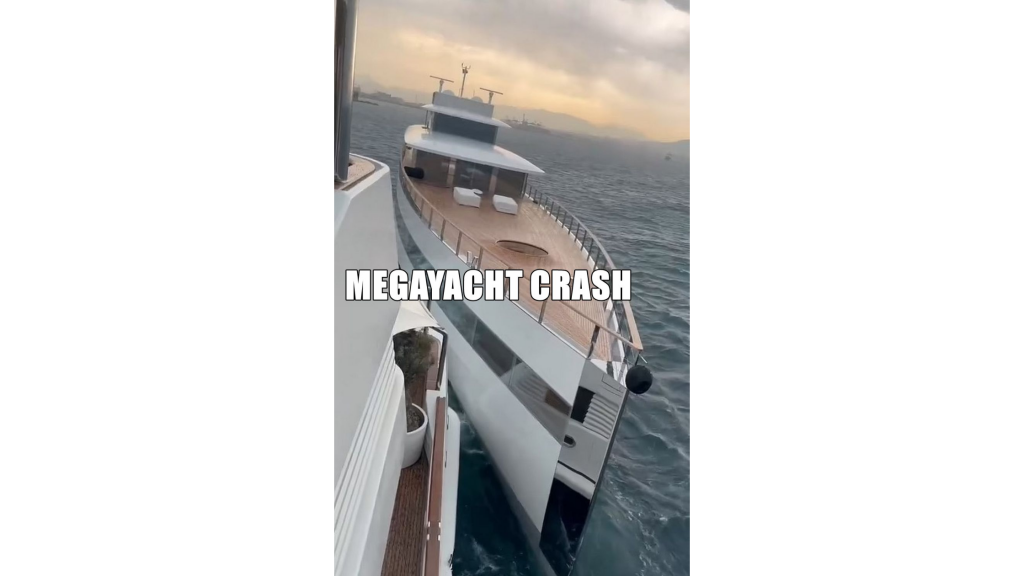
There are other differences, but these are the most common. Reviewing Rule 34 in the Amalgamated Rules is a good idea if you regularly cross the demarcation line in your boating.
What does it mean for you?
Much of this has to do with ship-to-ship communication and lighting of commercial vessels. For most recreational boaters, it does not affect what they need to do most times. However, there are a few important instances where knowing which rules apply is important.
When operating your boat near large ships, they may make sound signals to you if you get too close. The signal usually means a bit more than “Get out of my way, little boat.” It may signify a specific communication, such as “I’m going to leave you on my port side.” If you know this, you can maneuver safely around them and not accidentally cross their bow and endanger either boat.
Operating at night, you may see some different lights inland. Or worse, you may not see lights at all if you wander into a Special Anchorage where boats are not required to be lit. It’s your responsibility to check the charts for these and to be aware of the possibility.
The differences may never come up in your boating unless you boat near the demarcation lines and cross them a lot. When we boated on Narragansett Bay (inside the line) and spent weekends sailing to offshore islands outside the line, we crossed it all the time. But if you encounter a situation where different rules apply, it can make the difference between a safe and easy meeting and a panic and stress-filled encounter.
Common Sense Rules
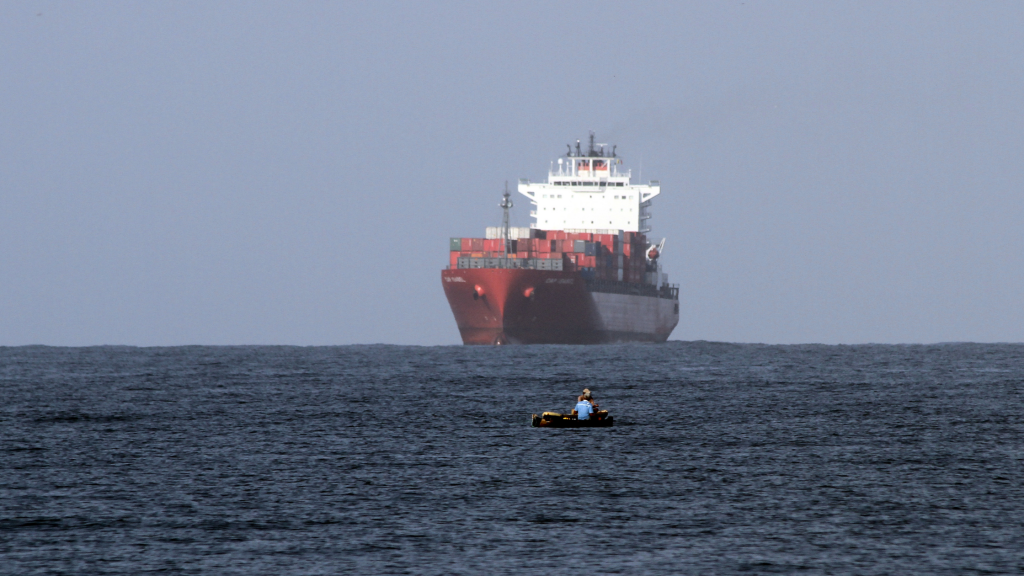
The rules of the road are quite explicit, but it’s also important to use common sense no matter what the rules say.
For example, COLREGS and Inland Rules state that a boat sailing is the stand-on vessel when encountering a vessel under power, so the power vessel must keep clear of the sailing vessel. But that doesn’t mean it’s safe or sensible for a thirty-foot sailboat to sail under the bow of a 300′ freighter expecting it to alter course for them. That big ship can’t turn on a dime, and may not even see you or notice it’s hit you.
No laws or rule books spell out common sense when dealing with courtesies between boats. But little choices, like how close and where you pass a smaller boat or when you decide to tack, can make boating safer and more fun for others. Whether you’re cutting a huge wake right in front of a sailboat or crash tacking into the path of a powerboat who thought he was giving you plenty of room the moment before you turned, use your head, look around, and read the situation constantly.
And always apply common sense and caution when dealing with big ships, barges, towing vessels, and any other boats. Stay well clear of them, and don’t cut too close, and you’ll rarely need to consult the rules. And if you hear any sounds or see any lights flashing your way, make sure you know what they mean for the specific waters you’re boating on!
- Posted in Blog, Boat Care, Boating Tips, Cruising, Fishing, iNavX, iNavX: How To, Interviews, Navigation, News, Reviews, Sailing, Sailing Tips
- 3 Comments
- Tags: COLREG, COLREGS, Demarcation Line, Inland navigation rules, USCG


August 10, 2025 at 8:52 pm, Eddie O. said:
Send this article to the attorney in Miami who is suing the Barge Co., on behalf of the families for the three souls that lost their life´s in that tragic accident last week on Biscayne Bay. What he should do is sue the Yacht club for sending kids on a Hobbie with a counselor in command of a vessel the they neither had knowledge of operation or complete control of, or does not know the principals of sea navigation or at least some common sense!!!
August 11, 2025 at 8:46 pm, Tom B said:
Eddie O.’s knowledge of the barge incident in Miami is a perfect example of a person who has no idea of right of way rules and how to apply them. It will take years for this case to be resolved , but that will not bring back the three little girls that lost their life. I feel certain that the crew on the barge and tug will be found negligent
August 12, 2025 at 6:21 pm, Duncan T said:
Since others have brought it up, what WAS the situation in the Miami accident? I would guess that the sailboat was the Stand On Vessel, but I don’t have enough information to know that for sure. Prudence and common sense would dictate that regardless of the COLREGS, the sailboat should have stayed well clear of the construction barge. But maybe the camp counselor sailing the Hobie just didn’t have enough experience to realize how fast the barge was moving and how to stay clear. Or perhaps they were trying to get clear but simply could not. I’m not trying g to be a ghoulish, and I feel sad for everyone involved in this tragedy. I just want to know what happened.